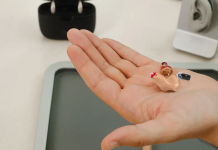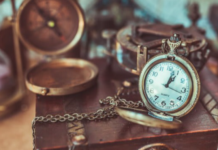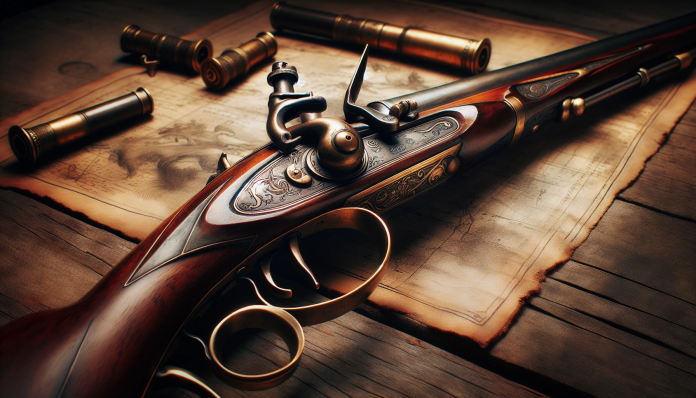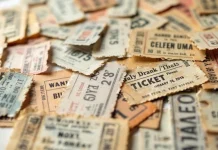For collectors and historians, historical firearms offer a tangible connection to the past. Each piece tells a story of craftsmanship, military service, or personal heritage. Sonoran Desert Institute reviews the unique role gunsmiths play in preserving and restoring these valuable artifacts, highlighting how the right combination of technical skill and historical sensitivity is essential to honoring a firearm’s legacy. As an institution accredited by the Distance Education Accrediting Commission (DEAC), SDI emphasizes the importance of preservation-focused gunsmithing in maintaining the authenticity and cultural value of historical firearms.
Gunsmiths working with historical firearms must balance restoration with preservation, ensuring that original finishes, markings, and mechanical integrity are maintained whenever possible. This careful approach not only safeguards the firearm’s historical value but also honors the craftsmanship and stories embedded in each piece.
The Importance of Historical Firearms Preservation
Historical firearms often hold significant cultural, historical, and monetary value. Whether it’s a Civil War musket, a World War II service rifle, or an early 20th-century sporting shotgun, proper preservation ensures that these pieces can be studied, displayed, and appreciated for generations.
Gunsmiths play a vital role in protecting these artifacts from deterioration, while respecting their original character. The goal is not to modernize or heavily modify the firearm but to stabilize and maintain it, preserving as much originality as possible.
Assessing Condition and Historical Significance
Before beginning any restoration project, gunsmiths conduct a thorough assessment of the firearm’s condition, construction, and historical context. This evaluation helps determine which repairs are necessary and what approach best respects the firearm’s historical integrity.
Factors considered include:
- Manufacturer markings and serial numbers
- Original finishes and materials
- Previous repairs or modifications
- Rarity and documented provenance
- Mechanical functionality and safety concerns
This careful assessment guides decisions about whether to perform full restorations, partial repairs, or conservation-only treatments.
Cleaning Without Compromising Patina
One of the most delicate aspects of historical firearm restoration is cleaning. Decades or centuries of accumulated grime, oxidation, and corrosion must be removed, without erasing the firearm’s original finish or historical wear.
Gunsmiths use gentle cleaning methods such as:
- Soft-bristle brushes
- Non-abrasive solvents
- Controlled ultrasonic cleaning
- Cotton swabs and oil applications
Removing active rust while preserving the patina requires experience and patience. Overzealous polishing can permanently damage valuable collector pieces.
Wood Stock Restoration
Many historical firearms feature hardwood stocks that may suffer from cracks, warping, or finish degradation over time. Gunsmiths skilled in stock restoration can:
- Repair cracks using adhesives and pins
- Steam out dents and compression marks
- Refit loosened inletting
- Refinish stocks with historically appropriate oils or shellacs
The objective is to stabilize the wood while preserving its original color, grain, and wear patterns, whenever possible.
Metal Component Repair and Preservation
Corroded or damaged metal parts may require targeted repair or stabilization. Gunsmiths carefully evaluate whether to:
- Reblue or refinish metal surfaces
- Replace lost screws or springs with period-correct reproductions
- Perform weld repairs on cracked frames or barrels
- Address mechanical wear in actions, triggers, or safeties
Maintaining functionality, without over-restoration, protects both historical and monetary value.
Reproduction Parts and Authenticity
When original parts are missing or beyond repair, gunsmiths may use reproduction components to complete a restoration. High-quality reproductions, when properly fitted and marked, allow collectors to enjoy functional firearms, without misrepresenting originality.
Clear documentation of any replaced parts is essential for maintaining transparency about the firearm’s condition and restoration history. Detailed records help preserve the firearm’s provenance, providing valuable information for collectors, appraisers, and future restorers. Proper documentation also ensures that modifications are reversible when possible, preserving the firearm’s historical integrity.
In many cases, these records can enhance the firearm’s value by demonstrating that restoration work was performed with care and expertise. Accurate documentation assists in differentiating between original and reproduction parts, which is critical for authenticating the firearm’s historical significance.
Balancing Restoration with Collectability
In the world of historical firearms, over-restoration can negatively impact value. Collectors and museums often prefer firearms that retain as much original finish and character as possible.
Gunsmiths collaborate with clients to balance mechanical safety with historical preservation. In many cases, stabilization and conservation may be preferable to complete refinishing or full mechanical rebuilding.
Safety Inspections for Firing
Some collectors intend to occasionally fire their restored historical firearms. Gunsmiths assess whether a particular piece can safely handle modern ammunition pressures, without risking catastrophic failure.
Safety inspections may include:
- Chamber and bore inspections
- Headspace measurements
- Action strength evaluations
- Testing of springs, firing pins, and safeties
For many antique firearms, the safest course is to maintain them strictly as display or ceremonial pieces.
Legal Considerations in Restoration Work
Restoring historical firearms must comply with applicable federal, state, and local firearms laws. Modifications to antique or Curio and Relic (C&R) firearms can sometimes affect their classification and legal status.
Gunsmiths working on historical pieces must stay current on regulations governing:
- Antique firearm definitions
- Import restrictions
- Modification rules for C&R status
- Serial number preservation requirements
Clear documentation protects both the gunsmith and collector throughout the restoration process.
Collaboration with Historians and Experts
Successful historical restorations often involve collaboration with historians, museums, and collectors specializing in particular eras or manufacturers. Consulting experts can help verify markings, determine correct finishes, and source period-correct replacement parts.
Gunsmiths who develop strong research skills and professional networks expand their ability to serve demanding collectors and institutions.
Education for Historical Firearm Restoration
Restoring historical firearms requires both technical gunsmithing ability and historical knowledge. Sonoran Desert Institute includes topics in its comprehensive gunsmithing curriculum that introduce students to the basic principles of firearm restoration, material preservation, and ethical considerations involved in historical firearms care. Students gain the perspective necessary to approach these delicate projects with care and respect.
The Unique Role of Historical Gunsmithing
Preserving historical firearms allows future generations to study and appreciate the craftsmanship, technology, and cultural significance of past eras. For gunsmiths, restoration work combines technical precision with historical stewardship.
As the collector market grows and interest in firearm history expands, skilled gunsmiths who specialize in historical preservation will continue to find rewarding opportunities to protect and honor these valuable artifacts, while contributing to the broader understanding of firearms history.
































